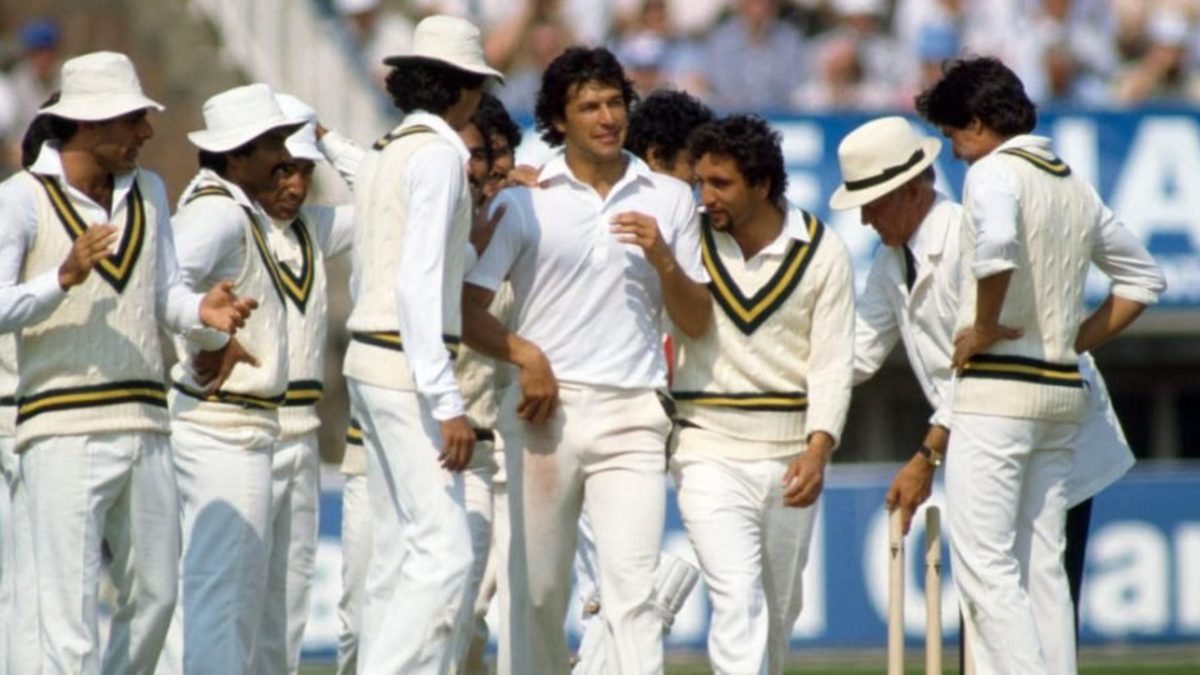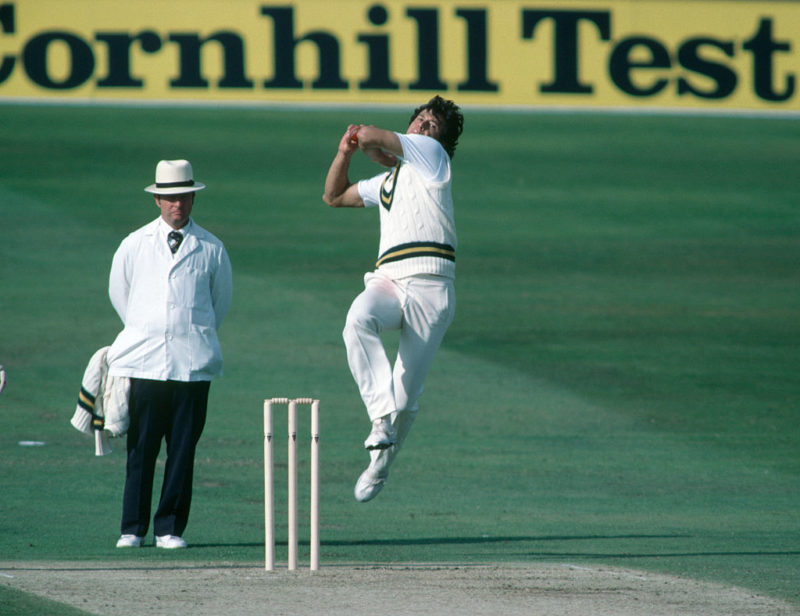
To read Wisden Cricket Monthly‘s cover feature on the 12 greatest individual performances across a Test series, pick up a copy of the latest issue
The latest issue of Wisden Cricket Monthly includes a special feature on the 12 greatest individual performances across a Test series. One of those was Imran Khan’s sensational effort against India in 1982/83 when – faced with a fierce rival, both individual and collective – he raised his game to unprecedented heights.
The 1980s was the era of the all-rounders, when a handful of magnificent cricketers – Imran Khan, Kapil Dev, Ian Botham and Richard Hadlee – did battle for their countries and also, let’s face it, against each other. When these supermen were on opposite sides, there was an added element to the contest, the four of them straining every sinew to come out on top.
These days it’s hard to imagine an Indian playing Test cricket against a Pakistani (2007 was the last time) but Imran and Kapil faced each other in the longest format on 23 occasions. In those games, Imran scored over 1,000 runs at an average of more than 50 (against Kapil’s 900-odd at 30), and took 94 wickets costing 24 each, against Kapil’s 84 at 32. Indeed, in head-to-heads with each of his major rivals, Imran had a superior record.
 Read the full feature in Wisden Cricket Monthly
Read the full feature in Wisden Cricket Monthly
But in 1979/80 India had beaten Pakistan 2–0 at home in a bad-tempered series, with Kapil taking 32 wickets and emerging as the spearhead of the Indian attack. Imran took 19 wickets but was injured halfway through, missing one Test and struggling in others.
So when India arrived in 1982, the 30-year-old Imran had something of a point to prove. Earlier in the year, having taken over from the divisive Javed Miandad as captain, he had led Pakistan to England – topping the batting and bowling averages while losing a tight series 2–1 – and then crushed Australia 3–0 at home.
But the big one was India, and Kapil. The first match in Lahore gave a signal of Pakistan’s batting firepower as Zaheer Abbas scored a double hundred and Mohsin Khan hit 94 and 101*. Mohinder Amarnath and Sunil Gavaskar replied in kind and it looked like wickets would be at a premium in the series. Kapil and Imran, the big beasts, were both feeling their way into things.
 Imran took 62 Test wickets at 13.29 in 1982
Imran took 62 Test wickets at 13.29 in 1982
Over the next three Tests Pakistan’s batsmen were relentless, piling up huge totals on flat tracks. They scored 3,058 runs for the loss of just 50 wickets across the series, averaging a ludicrous 61.16 per wicket. India seemed to have the necessary batting firepower to respond but simply had no answer to Imran.
He was at the peak of his powers, conventional and reverse swing coming at will and at high pace. His approach was hypnotic, the run-up seemingly starting level with third or fourth slip, his upper body leaning forward as if he were running into a slight headwind, strides steadily lengthening as he approached the crease, any resultant dismissal – and there were plenty – barely celebrated.
On Christmas Day, during a devastating spell in Karachi, Imran became the first Pakistan bowler to take 200 wickets, ending with 8-60 including 5-3 in his last 25 balls.
He followed this up at Faisalabad with 11 wickets and 117 off just 121 balls (including depositing Kapil back over his head for six), only the third time a player had taken a five-for in each innings and scored a ton in the same Test, Alan Davidson and Ian Botham being the others (since joined by Shakib Al Hasan).
Impressed? Well, add into the mix the fact that he was doing all of this with a developing stress fracture. He says in his autobiography: “By the third Test, I could feel a severe pain in my left shin. On the flat wickets, I had put everything into my bowling, with the result that I made the injury worse. By the fourth Test, it was unbearable without pain-killers and I got through the last two Tests on sheer willpower.”
The misdiagnosed stress fracture meant Imran would not bowl properly in a Test for three years, but here he just forced himself through the pain. Eight wickets followed at Hyderabad as the Pakistan juggernaut rolled on, Miandad and Mudassar Nazar’s alliance of 451 equalling Bradman and Ponsford’s then record for the highest partnership for any wicket.
The fifth Test was ruined by rain, the sixth cut short by rioting. Imran’s returns were highly respectable but the damage had already been done. He had bent those three Test matches to his will and dominated a series like very few others before or since.
Nazar’s 761 runs in the series broke Hanif Mohammad’s national record, while Zaheer racked up 650 and Miandad 594 – an aggregate of 2,005 that was yet another record, for the three leading scorers in a side. They all made their runs at over a hundred per innings and Imran himself averaged over 60 in his five knocks.
But it was his bowling that won it. Sustained, thrilling, skilful, brutal. Forty wickets (of the 81 to fall) at 14 with a strike rate of 33. If there had been more play he may have threatened Sydney Barnes’ record haul of 49 wickets (of the 96 to fall). As it was he bowled a similar number of overs – 223 to Barnes’ 226, and conceded a similar number of runs (558 to Barnes’ 536). Barnes, however, scored nine runs in his five innings.
By the end of the series, Imran had picked up 88 wickets in 13 Tests as captain. In 1982 alone, he took 62 wickets at 13.29, the lowest average of any bowler to take at least 50 wickets in a calendar year. His battle with Kapil, and with India, had been conclusively won.









